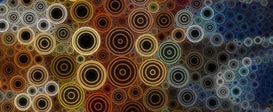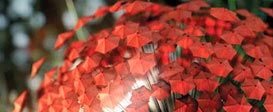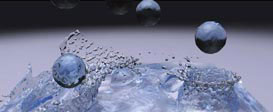Sketches & Posters
- The Sketches & Posters submission deadline was
12 July 2008. - New for SIGGRAPH Asia 2008
- Frequently Asked Questions
How to Get Accepted or Rejected
What's New?
1. What's changed for SIGGRAPH Asia 2008?
We are adopting most of the changes introduced in SIGGRAPH 2007. Please see New for SIGGRAPH Asia 2008 for details.
2. Why have Sketches and Posters merged into a single programme?
Sketches and Posters have always shared the goal of presenting new, innovative ideas that can be described in a single page. We merged the programmes because they offer two different presentation styles for similar kinds of material with similar submission requirements. This permits participants to submit material to both programmes simultaneously (or choose just one or the other).
3. May I send a submission to be considered only as a sketch, or only as a poster?
Yes, there is an option on the submission form to express such preferences, but the default is that all submissions will be considered for either forum.
Policies
4. Is a sketch or poster a publication?
No. A sketch or poster is an oral presentation, not a publication. Presenting work in these forums does not preclude formal publication of the work elsewhere, and the SIGGRAPH Technical Papers programme does not consider sketches or posters as prior publications. The policies of other conferences and journals may vary, but citing prior oral presentations on related topics is generally optional, not required. Note that while in some past years accepted sketches abstracts have appeared in the ACM Digital Library, they have not appeared there since 2007.
5. Will my sketch or poster preclude publication of my idea in future conferences and journals?
No. The SIGGRAPH Technical Papers programme will not consider sketches and posters as prior publications. The policies of other conferences and journals may vary, but citing prior oral presentations on related topics is generally optional, not required.
6. What is a good way for me to encourage other researchers to cite the work that I describe in my sketch or poster?
Write a complete technical description of the work in the form of a research paper, and create a "technical report" or "white paper" that is publicly available, for example via the web.
7. Should submissions be prepared anonymously, like Technical Papers? How about accompanying material?
No. The review process is single blind, which means the reviewers will know who the authors are, but the authors will not know who the reviewers are. The submission has to be one page long, in final format, including the names of all collaborators on the work and their institutions. Accompanying material should include videos, additional results, tabled data, etc. But it should not be used to extend the explanations given in the one-page submission. Reviewers will be asked to reject such submissions without review. Please see also question 18.
8. Can I submit work I've published or submitted elsewhere?
No, Sketches & Posters is dedicated to presenting new, unpublished work. Work that is under review elsewhere (for example, to a journal or another conference) cannot be submitted to the Sketches & Posters programme. Such dual submissions are widely considered unethical.
9. Can I submit work to Sketches & Posters and then submit a more complete description to other conferences (for example EGSR, SGP, or SCA) while the work is still in review by SIGGRAPH Asia 2008?
No. See question 8.
10. How should I write up work that is based on a recent paper I wrote but extends that work?
Submissions with new, incremental results based on previous publications are a common occurrence. You need to reference the original paper(s) and clearly explain what in your submission is new. To consider the work for acceptance, the jury expects about 30% new material that goes beyond the previous publication.
11. Can I submit work that I did for my thesis?
Yes, provided that work has not already been extracted from the thesis and formally published.
12. My SIGGRAPH paper was rejected. Can I submit an abstract about the same work to Sketches & Posters?
No. For SIGGRAPH Asia 2008, notification of Technical Papers acceptances will happen after the Sketches & Posters submission deadline.
13. My company has a great new product that is of general interest to the SIGGRAPH community. Can I submit an abstract about it?
A simple product announcement would not be appropriate for the Sketches & Posters programme. However, a methods or systems description that presents the engineering design and algorithms behind the product could be appropriate.
How to Get Accepted or Rejected
14. Do you have any advice on how to write my abstract so it will be accepted?
First of all, make sure your submission is exactly one page long. The jury has a small amount of time to review a large number of submissions. To maintain fairness, we have to enforce the same length and a uniform submission format. Submissions that are longer than one page will be rejected without review (refer to Question 7). Non-native English speakers may wish to make use of the English Review Service to check for grammar and readability before submitting their abstracts. Please note that to be able to use this service you will need to send your work a few weeks before the deadline.
It should be immediately obvious at the beginning of your abstract what the new contribution is. Just one or two sentences such as: "We present a new method that's N times faster." Or: "We have conducted a new study comparing A and B." Or: "Effect X in feature film Y presented a new challenge." Or something similar.
Try to focus on one or two key ideas. One page is not a lot of space. For example, it is almost impossible to summarize all the contributions of a regular, eight-page paper in one page. Remember that the jury members have very limited time to "get it," so keep it simple.
You should cite previous work where appropriate. Of course, there is not space for a huge bibliography, but a few key references are helpful. If you propose to present work that extends previous work of your own, cite the previous work and explain what is different. For example: "We build on our previous work [1] by ..." If there has been previous work by several others, choose one major work to cite and state why your work is different. For example: "Unlike previous work, such as [1], we ..."
There are few graphics techniques and applications that result in absolutely no visuals. Submit supporting images or video to illustrate your work. The jury is more likely to accept a sketch if they can examine the results. Be sure that your images are not compressed with a lossy method that renders them useless.
Examples of various types of successful abstracts from the past may be found here, here, and here. These examples do not cover the range of possible submissions but are meant to provide a sense of what a few people have done. Examples of abstracts from Sketches from some past years may be found in the ACM Digital Library.
15. Why are submissions rejected?
Submissions that are longer than one page will be rejected without review. For technical ideas, several phrases are commonly heard just before rejection: "There's not enough new here." "It's not clear enough. I don't understand it." "There's not enough evidence to demonstrate the claims." "I'm not impressed by the results." "This has been done before." Try to get the reviewers excited, thinking: "Hey, this is a talk I would like to attend!"
For art, these phrases are often heard: "It's technology-driven rather than concept-driven." "There are too many ideas/projects rolled into one." "The execution seems antithetical to the concept."
16. How do I decide whether to submit my work to Sketches & Posters or other programmes?
Descriptions of production techniques can be submitted directly to Sketches & Posters. If your idea is mostly technical, and you feel it has a decent chance as a paper, submit it there. If it's not yet fully developed, it can maybe be a nice Sketch or Poster. If your work is intended for viewing in a gallery setting, please submit it to the Art Gallery. If your primary intention is to discuss the process or other research relating to the creation or analysis of such works of art, please submit to Sketches & Posters.
Submissions
17. Why do you only accept electronic submissions?
The jury has a small amount of time to review a large number of submissions. Electronic submission allows the jury to start the review process almost immediately. It also saves the time and costs involved in shipping submissions to the jury members.
18. Can I submit earlier papers or technical reports as supporting materials?
No, the jury already has its hands full and will not have time to read them. The acceptance decision will be made based on your one-page submission (please refer to Question 7). However, you can provide URLs to those works in your submission or supporting documentation, so if a specific question arises, jurors can download the works themselves. And remember: the supporting documentation if any, should be limited to three pages maximum and should contain mostly captioned figures (images, graphs, charts, tables, etc.).
Video Submissions
19. Do I have to submit a supporting video of my work?
You're not required to, but it is often a good idea. The power of a video during the jury process cannot be stressed enough. The jury has a small amount of time to review a large number of submissions. Seeing the video can answer many questions that the jury might ask after just reading the abstract. It is a shame if the phrase "I wish they had provided a video" is uttered during the jury meeting. In particular, the jury is unlikely to accept work about animation if they haven't seen the animation. Uploaded videos should be in QuickTime MPEG-4 or DivX Version 5 formats, and the file size should not exceed 100 MB.
20. My submission is about production effects, but the studio won't give permission to submit a supporting video because the movie hasn't been released yet. What should I do?
First, be certain that you will have permission to show the actual effects at the conference. If possible, submit a video that uses non-sensitive stand-in models or scenes to illustrate the techniques in question, with an explanation that the real thing will be shown at the conference. Contact the Sketches & Posters Chair to see if some special arrangement can be worked out. If all else fails, submit the abstract without a video, but with a supporting document listing in detail what the contents of the video will be, illustrated with still frames if possible.
21. My video files are larger than 100 MB. What should I do?
Do everything possible to make them smaller. The total size of your uploads should be below 100 MB. Jurors in various locations around the world will need to download the submitted videos, and we need to keep the total size of all submissions reasonable.
First, remember that the total length of your animation must not exceed five minutes. The jurors won't have time to watch more than that. Also, remember that the sketch presentation itself is only about 15 minutes long, and if you have more than five minutes of animation to show, there won't be much time left for your talk. So if your animations are longer than five minutes, you will probably want to edit or excerpt them for the talk in any case.
Next, try decreasing the image resolution and/or using a better compression technique and/or settling for higher compression at the cost of somewhat reduced image quality.
If you have tried very hard to do all this but still can't get the size down, contact us and explain the specifics of your situation in detail, and we'll see what we can work out.
22. Can I submit a supporting videotape in VHS NTSC or PAL format?
Unfortunately, no. Supporting videos must be uploaded in digital form to save everyone the effort of making and shipping multiple copies of videotapes. We will only accept uploaded videos in QuickTime MPEG-4 or DivX Version 5 formats.
Sketch Presentations
23. What are the session titles for SIGGRAPH Asia 2008?
We don't know yet. The jury selects submissions without regard to sessions and titles. Only after the selection process is finished do we group the sketches into sessions related by topic. This means that unlike other conferences in which the session topics are set in advance, the jury never needs to accept or reject submissions in order to fill slots. On the other hand, this also means that occasionally there are sessions that lack a strongly coherent theme. You need not be concerned about sessions during the submission process.
24. Can my company have a dedicated session in which we present a collection of sketches about various aspects of a large project?
No. You are welcome to submit a collection of related work. However, the jury will evaluate the submissions individually and decide whether to accept each one individually, so each must stand on its own. For those that are accepted (for sketch presentation), we can't promise that they will be presented together in a single session. They may be grouped into sessions with other sketches that present similar techniques.
25. How long will my presentation be?
You can count on 15 minutes, followed in every case by about five minutes of Q&A. We don't know the exact length in advance. It depends on the number of sketches accepted (we don't have a target number; the jury accepts all it deems appropriate), how the sketches are sorted into sessions, and the final scheduling of the sessions. It won't be less than 10 or more than 20 minutes, that's for sure.
When your submission is accepted for presentation as a sketch, and the schedule is finalized, you will be notified as to the scheduling and timing of your session.
Poster Presentations
26. What is a poster, anyway?
A poster is a large-format document. It usually contains mostly visual information, as opposed to a sketch, where one expects most of the page to be used for text. Keep in mind that you want to draw the audience's attention, so design your poster so that it is attractive, as well as informative.
At the conference, you will mount the poster on the assigned wall. You should supply the posterboard and materials to attach the paper to it. SIGGRAPH Asia 2008 will supply the materials to mount the poster on the wall.
27. If a poster has multiple authors, do we all need to stand by the poster during our session?
During the session, the poster must be staffed at all times by at least one person. You do not all need to stand by the poster throughout the session. In fact, you may wish to "tag team," taking turns at your own poster and seeing the other posters in the session.
Between sessions, you obviously are not required to stand next to your poster, but it is always a good idea to leave name cards or some sort of contact information. Also, you can add information next to the poster specifying when you'll actually be there to explain your work during your session.
28. Will you print and hang my submission or should I create the poster myself?
You must produce and bring the poster yourself.
29. Will I have a table to put my laptop or other gear on?
Yes, during your session you will have a table to stand at and put things on.
30. Will I have an internet connection for my laptop?
Wireless internet access will be available throughout the convention centre.
31. Will AC power be available for my laptop or other devices?
We will try our best to provide everyone with electricity, but at this point we can't promise AC power outlets. Charge your batteries before the session.
32. Can I leave my laptop or other equipment there before or after the session?
No! The poster sessions are in unsecured open areas. Take your laptop and all your gear with you.








